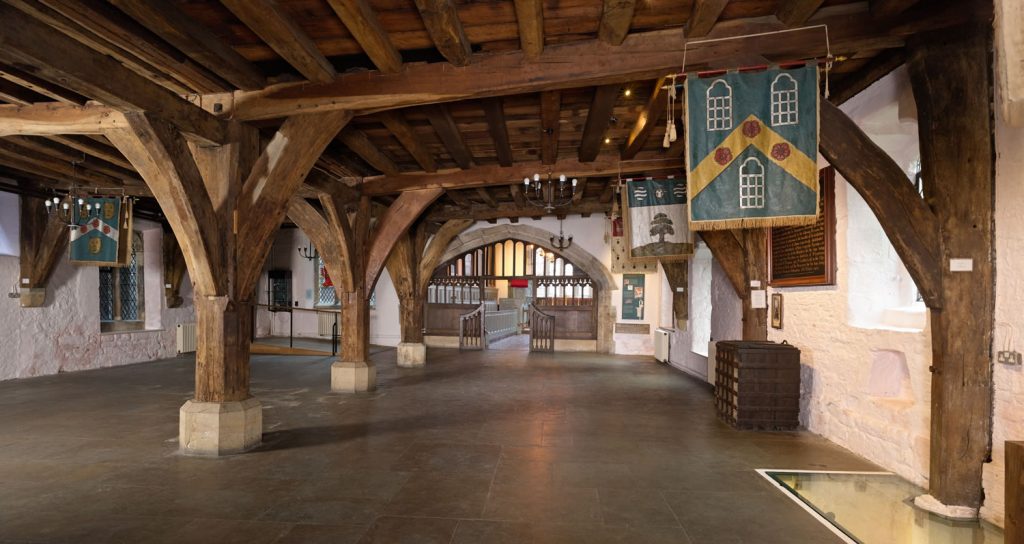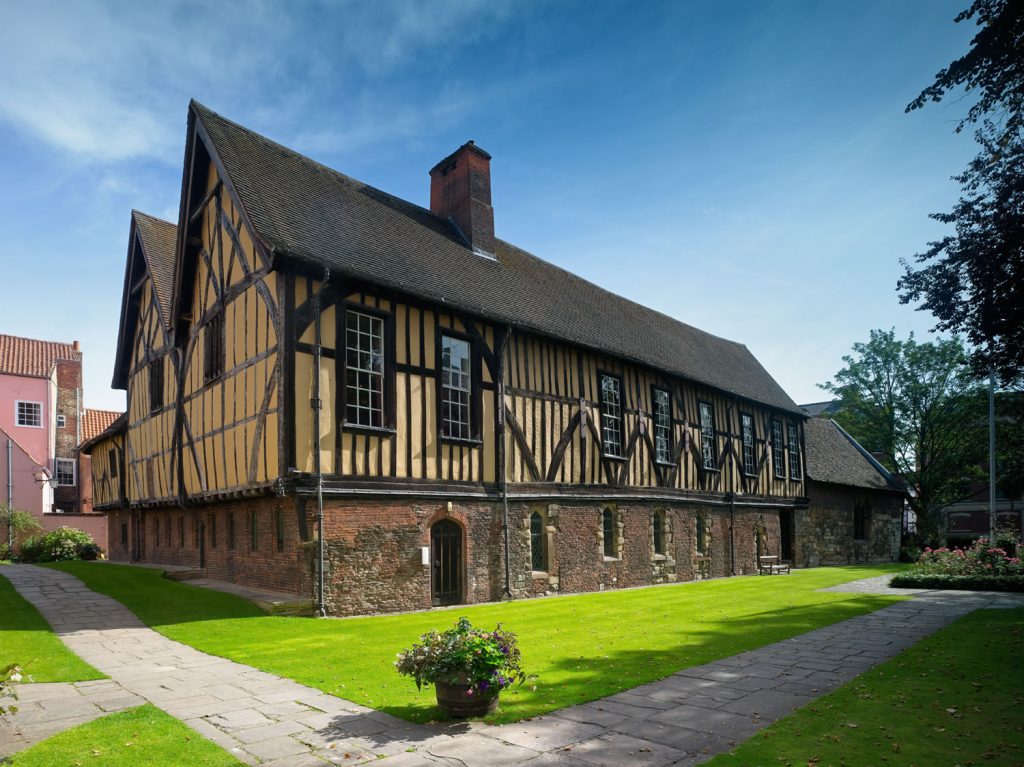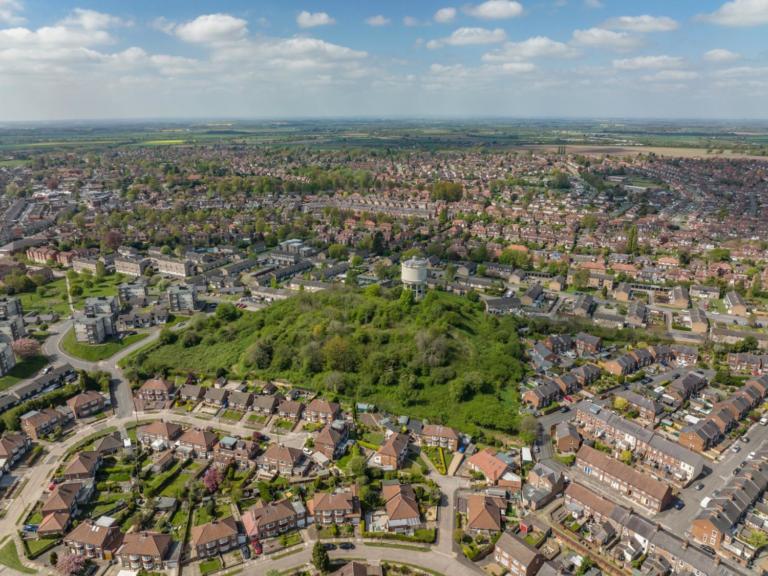If you’ve ever waited for a bus on Piccadilly and peered over the wall to see an odd looking timber building, you might have had a few questions. Grand, unusual, and sitting low down right by the Rover Foss, the Merchant Adventurers’ Hall was once one of the most important buildings in York and today is know for… well, never stopping being what it was originally intended to be. Which is rare.
Today the best place to see the hall, which started to be built in 1357, is from the aforementioned Piccadilly. However, that is relatively modern view, as the raised street over the Foss didn’t exist until the turn of the 20th century. To get an authentic view of the hall, enter via the tunnel off Fossgate; the original entrance. Oh, and to be truly authentic, you should be a wealthy 14th century person with a purse full of coin and a portfolio of overseas trading interests. Drat, so close.

The clubhouse
Constructed on the site of an old Norman manor house, the hall was paid for by a wealthy group of men and woman who formed The Guild of Our Lord Jesus and the Blessed Virgin Mary. Originally the intention was purely religious and charitable, with the undercroft being used as a hospital for the sick, and almhouses for the poor. However, the upper floors were used for the members to conduct their business, and as so many of them were merchants and traders, they set up a trading guild by 1430. A royal charter was granted by King Henry VI and the company changed their name to The Mistry of Mercers. You can see see the charter in the hall today.
It is from this point on that the importance of the guild, and their hall, sky-rocketed. Any goods coming into the city to sell went through the guild, and the members themselves became very influential, travelling throughout the country, and internationally, to keep their money-making interests active. What is so rare about the hall is that many of the original records of these adventures still exist, giving us an insight into the type of people that the ‘Merchant Adventurers’ were.
Lost horses?
One such character immortalised by expense records was John Lillyng. The surviving documents show that John might not have been the most honest of traders, making several trips to London, seemingly on behalf of the guild, and charging all his expenses to them. Apparently John needed 40 shillings for “wyne and dyners” for a group of lawyers and clerks, and further payments which appear to be bribes for members of the royal court. On one journey he also sought reimbursement for wine and cakes and, strangely, two lost horses. As you do.
The guild continued to go from strength, and the hall saw enlargements and alterations. A brick chapel was added – supposedly the first brick building in the city since Roman times – and also meeting rooms and an annex. As well as controlling trade in York, they also took care of their own, providing money and care to the widows and children of deceased members.
Close shave
However, as with all organisations who purported to do God’s work, they had to justify their existence at the time of the Dissolution of the Monasteries. Had their religious origins and Christian work seemed too much for Henry VIII’s tastes, they would have lost everything – including the hall. Fortunately the guild played down their religious elements and focussed on their importance to York’s economy, surviving the chop. Things improved under the reign of Henry’s daughter, as Elizabeth I granted the guild the charter to change their name to The Company of Merchant Adventurers – which still exists to this day.
By the start if the 16th century the guild’s importance had started to dwindle. However, that didn’t stop the wealthy members from continuing to improve their fancy hall, and it was at this time that the Fossgate gatehouse was originally built, lining up the entrance tunnel with the hall’s main entrance. Also, from this point on, the guild seemed to continue furnishing the hall with items saved from other York Buildings – many of which were about to be demolished. Many of the stained glass windows were originally housed elsewhere, the green wood panels of the Governor’s stall were from the Assizes Courts, and the chimney piece in the Governor’s Parlour was from a nearby, now demolished, house.
Still game
The Company of Merchant Adventurers is still very much active today, making the hall the largest wood frame building in the world that is used for its original purpose. Although no trading takes place there any more (with the exception of the gift shop and cafe) it is still used for the company’s purposes of charitable and social events. You can visit it and see of this wonderful old stuff, and you don’t have to own several plantations in Virginia. Which is nice.











Add a comment